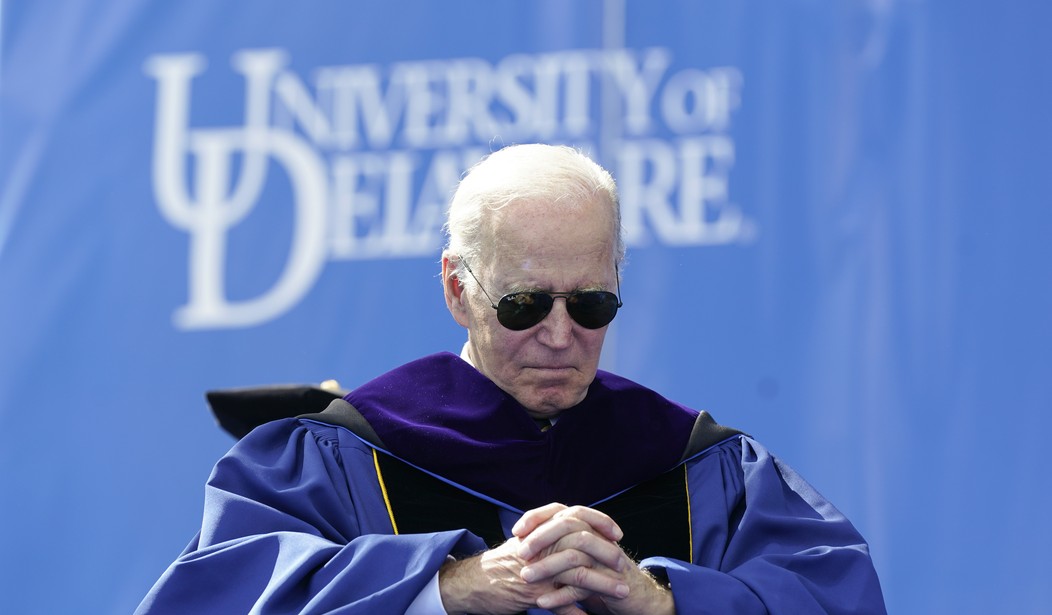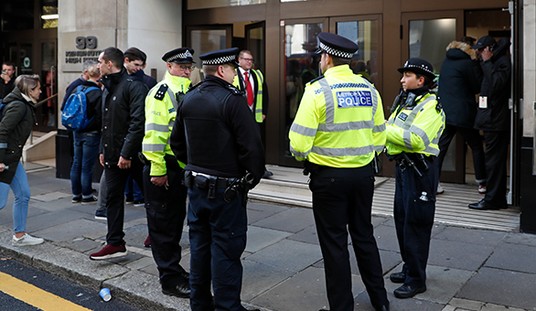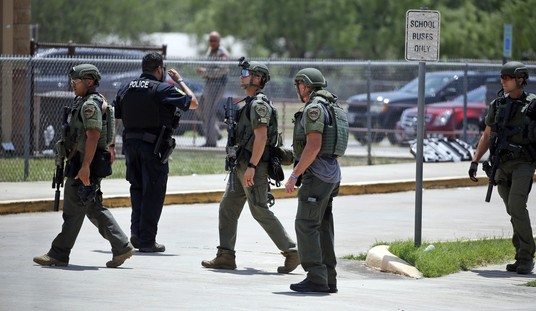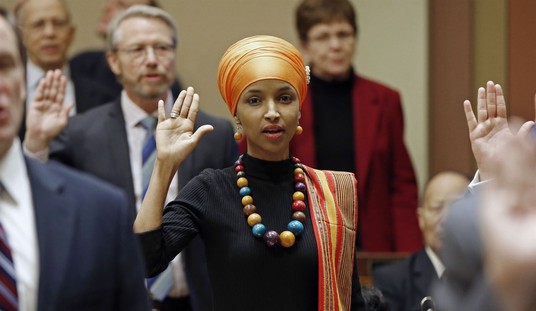Make no mistake about it — Joe Biden’s student-loan forgiveness plan is a bailout of Academia, and it’s as bad or worse as the Washington Post’s editorial board declares. Allahpundit mentioned it in his earlier round-up of Democratic pushback, but the editorial is worth highlighting for its perhaps-unintended exposure of just how badly federal education policy performs in the real world.
The White House has launched a full-court press to defend against criticisms of the student-loan forgiveness plan. The normally friendly WaPo editors reject every element of that defense, especially the notion that there’s an emergency that requires such action:
The loan pause, which President Donald Trump instituted in March 2020, was an emergency measure at a time when people were struggling to find jobs or had to remain home due to the pandemic. Thankfully, the situation is very different today: The unemployment rate for people with bachelor’s degrees and higher is just 2 percent. It’s hard to make the case that college graduates are still facing an unprecedented crisis.
The use of an “emergency” is even more hypocritical than that. The Biden administration argued in court while fighting to close out the CDC’s Title 42 enforcement at the border that the emergency phase of the COVID-19 pandemic was over. The CDC had already made a similar declaration a month earlier in attempting to end the Title 42 enforcement. The Post’s editors make it clear that there isn’t even a hint of an emergency in this order, especially among the beneficiaries of the policy.
They’re equally unimpressed with the social-justice claims made by Biden and his defenders on the merits. The so-called earning cap relates to current income levels, not the income potential that the education benefits delivered in the first place, they point out, and that the overall impact would be regressive in multiple ways:
The loan-forgiveness decision is even worse. Widely canceling student loan debt is regressive. It takes money from the broader tax base, mostly made up of workers who did not go to college, to subsidize the education debt of people with valuable degrees. Though Mr. Biden’s plan includes an income cap, the threshold does not reflect need or earnings potential, meaning white-collar professionals with high future salaries stand to benefit. Student loans, moreover, are a poor proxy for household income: An analysis by policy researcher Jason D. Delisle found that, in 2016, students from high-income and low-income families were just as likely to take on debt for their first year in an undergraduate program — and students from high-income families borrowed the largest amounts.
So the predicate is dishonest, and the impact is regressive. But it also directly contradicts what Biden himself heralded as a legislative achievement just days ago, the WaPo editors point out. Biden and his team were patting themselves on the back for supposed fiscal discipline in the Inflation Reduction Act, relying on the 10-year projection of saving around $300 billion — assuming Congress didn’t spend more money in the next few years.
Instead, Biden spent it in the next few days, and all of it will get spent up front. It will take a massive tranche of cash to fund that, too, which is … wait for it …
Mr. Biden’s plan is also expensive — and likely inflationary. The Committee for a Responsible Federal Budget estimates that extending the loan pause to the end of the year would cost $20 billion, while forgiving $10,000 for households making less than $300,000 would cost $230 billion. Together, these policies would nullify nearly a decade’s worth of deficit reduction from the Inflation Reduction Act.
Plus, they’re pretty sure Biden doesn’t actually have the authority to do this in the first place:
Moreover, it is unclear that the 1965 Higher Education Act even grants the president the legal authority to take such a sweeping step, given that it was historically understood to permit only more targeted relief.
In other words, this plan is dishonestly predicated, likely illegal, will blow out the deficit, hammer the working class, and do nothing to solve the actual problems with the student-loan program. So why do it, especially this close to an election? It may buy votes, sure, but that’s not the biggest issue facing Biden and the Left. It’s that the increasingly strident demands for loan forgiveness shows that the entire idea of student loans is a failure — one which fails to improve the lives of its recipients in proportion to their investment.
It’s a bailout of the borrowers, but also a bailout of Academia and its economic model.
The higher-education economic model needed a reckoning for years, perhaps decades, especially with its student-loan incentives. Federal loan guarantees incentivized demand, which in turn allowed tuitions to soar, which in turn made loans more and more burdensome. Colleges and universities raked in the cash while expanding their influence, so it certainly paid off for them.
However, the big escalation in debt for students started creating political problems for the schools and politicians. A dozen years ago, Barack Obama tried pretending that the problem was the cruel private lenders and all but federalized the entire student-loan industry. Within a few years, the program was in the hole by $22 billion, more than the combined annual budget of the EPA and Interior Department at the time. In fact, Obama’s newly federalized student loan program was going so well that Hillary Clinton proposed spending $350 billion to pay off much of the outstanding debt in it that same year.
Sound familiar?
That financial model for Academia is so bad, in fact, that even Haaahhhvaaaaad grads can’t earn enough to cover the investment:
Good news for thousands of my former students. I’m grateful on their behalf, Mr. President. https://t.co/FzmvcQNkli
— Laurence Tribe (@tribelaw) August 24, 2022
That’s an admission of abject failure. The investment isn’t worth the return, not even at Harvard. College educations are so overpriced that its customers will never earn enough to pay off its cost, not even with the significant income enhancement a college education usually produces. That makes it a bad investment, period — even when government is the lender, or at least controls the lending environment.
The proper policy response for a situation that’s so bad that the government has to bail out its program recipients is to close down the program itself. Remove the subsidies that drive the tuition costs out of sight and let the real market determine price equilibrium. If no one can afford to go to college without backbreaking debt, then other options will get selected instead — or colleges will have to dramatically re-scale their tuition prices to become attractive again.
And that’s why Biden and the Left are so eager to conduct the bailout rather than address the issue. Fixing the issue would mean ending Academia’s federal-government gravy train. And ending that gravy train would mean losing the ability to indoctrinate the next generation of Americans on wokery and progressive ideology. Neither Academia nor the Democrats would survive that.








Join the conversation as a VIP Member